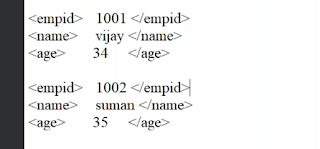Data Migration Techniques
Q. What is a data migration ?
- In SAP We generally use this term to migrate the data from legacy system to SAP System.
- Data Migration is also known as data transfer of data which means transfer of data from Legacy System to SAP System.
- Data migration allows you to prepare and move all data from existing legacy systems to your SAP Business ByDesign solution.
Example :-
- Suppose, You are working on some other NON SAP Platform for your business purpose and now you want to shift to SAP for your business, then You can use these Data Migration techniques to migrate your legacy data to SAP Data.
Q. What is a Legacy System ?
- The system other than the SAP System is called as legacy system.
- It is also called as Non- SAP system.
- This system contains the data that we will transfer.
Data Migration Techniques :-
- There are three main data migration techniques that we use :-
1. BAPI ( Business Application Programming Interface )
2. BDC ( Batch Data Communication )
3. LSMW ( Legacy System Migration Workbench )
Steps For Data Migration :-
Step 1 :- Extracting the Data
- We extract our legacy data from the legacy system into a file.
Step 2 :- Converting the Data
- Then we need to convert the data into a appropriate format.
- Only a suitable format of a file can be used for transfer purpose.
- This process is called as conversion.
Step 3 :- Importing the Data
- Then we need to import the data into our SAP system using various features of SAP.
- We will discuss in details in upcoming parts.
Step 4 :- Verification of Data
- At last we need to check the accuracy of data.
- This process makes sures that any faulty data does not get stored in SAP.
We will start with BAPI from next part.
.png)
.png)

Comments
Post a Comment